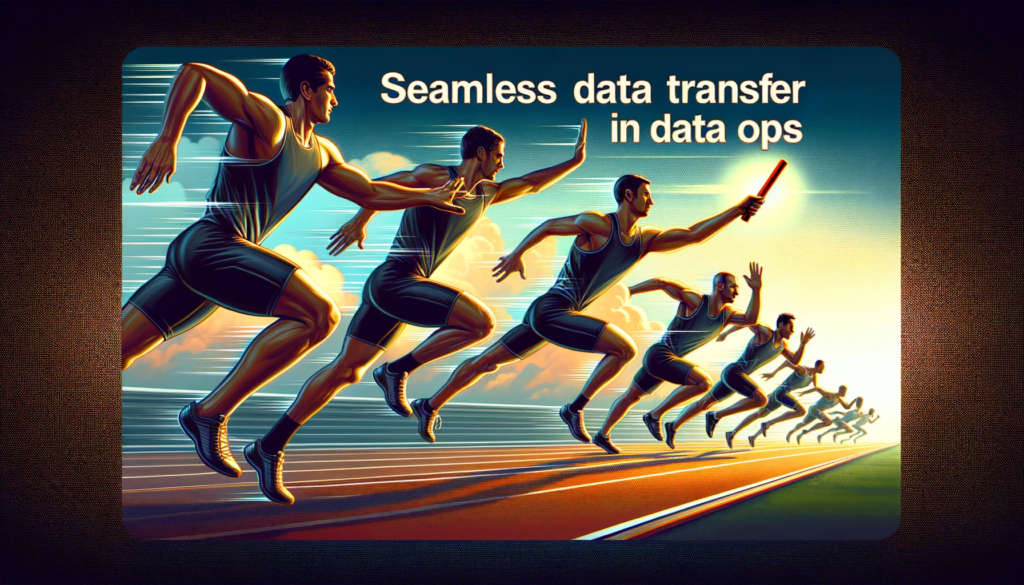Data Ops: Streamlining Data Management with a Collaborative Approach

Imagine you’re at a bustling food market, where various vendors work together to provide fresh, delicious produce to customers efficiently. This is similar to the world of Data Ops, a collaborative approach that streamlines the complex process of managing and utilizing data. Let’s explore Data Ops in a simple, beginner-friendly way, using everyday examples and vivid analogies to bring the concept to life.
What is Data Ops?
Data Ops stands for Data Operations. Think of it as a well-oiled machine in a factory, ensuring that every part of the data lifecycle, from collection to analysis, works seamlessly and efficiently. It’s about breaking down silos and encouraging collaboration between different teams.
Image 1: A smoothly running machine with interconnected gears, symbolizing the integrated processes in Data Ops.
How Does Data Ops Work?
To understand Data Ops, consider a relay race. Each runner (data professional) must pass the baton (data) smoothly and quickly to the next runner. Data Ops ensures that this exchange is seamless, from data engineers and scientists to business analysts.

Key Components of Data Ops
- Data Integration: Like a chef combining ingredients to create a perfect dish, Data Ops integrates data from different sources, ensuring consistency and quality.
- Data Processing: Data Ops processes data, akin to a postal system sorting and delivering mail to the right addresses.
- Data Analytics: Finally, Data Ops analyzes data to derive insights, much like a detective solving a mystery by piecing together various clues.
Benefits of Data Ops
- Efficiency: Data Ops improves efficiency, reducing the time it takes to go from raw data to actionable insights. It’s like using a high-speed blender instead of a manual whisk.
- Collaboration: By promoting teamwork, Data Ops breaks down barriers between departments, much like removing walls in an open-plan office.
- Quality and Compliance: Data Ops ensures high data quality and adherence to regulations, similar to quality control in a factory.

Data Ops in Action: A Simple Example
Consider a retail company wanting to analyze customer buying patterns. Data Ops acts like a conductor of an orchestra, ensuring that data from sales, inventory, and customer feedback harmonizes to provide meaningful insights, enabling better business decisions.
The Future of Data Ops
As more organizations recognize the value of data, Data Ops will become as essential as a GPS system for navigating a complex city. It will guide companies through the maze of data, leading to more informed decisions and strategies.
Conclusion
Data Ops is a vital component in today’s data-driven world, enabling organizations to manage and utilize their data more effectively. By fostering collaboration and streamlining processes, Data Ops not only improves efficiency but also ensures that data is a valuable asset for business growth and innovation.




